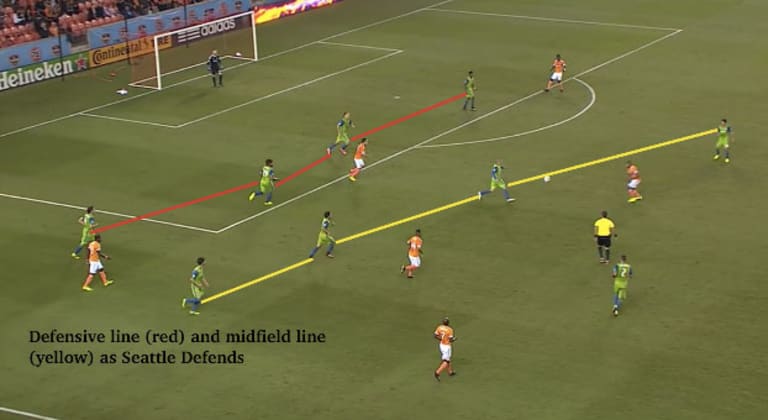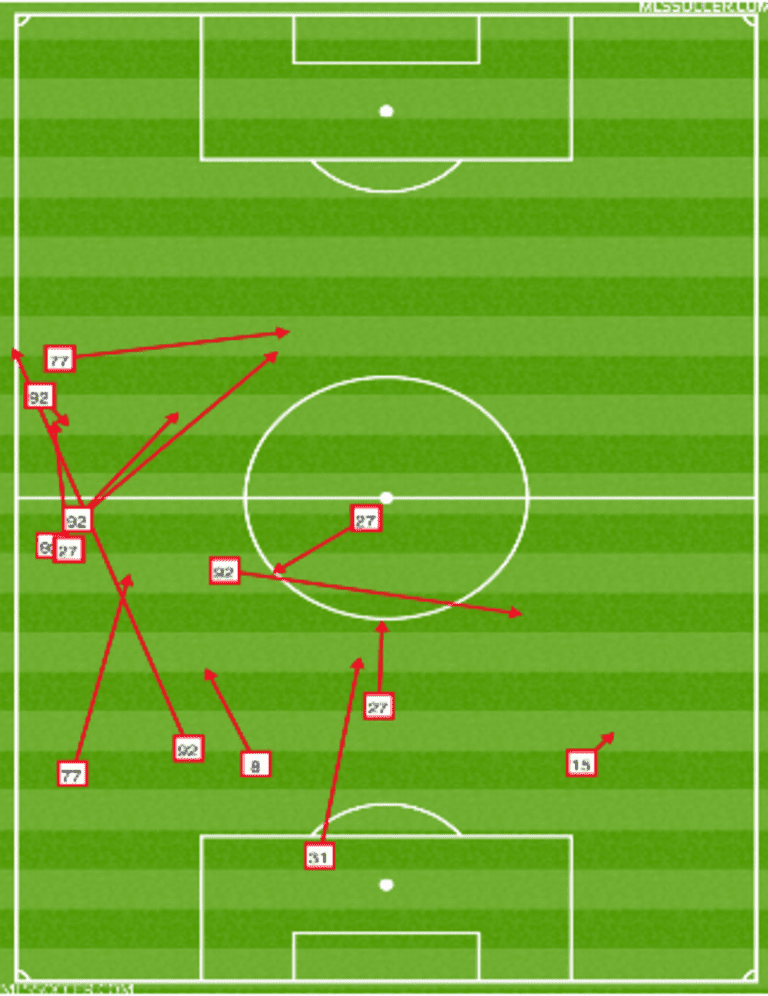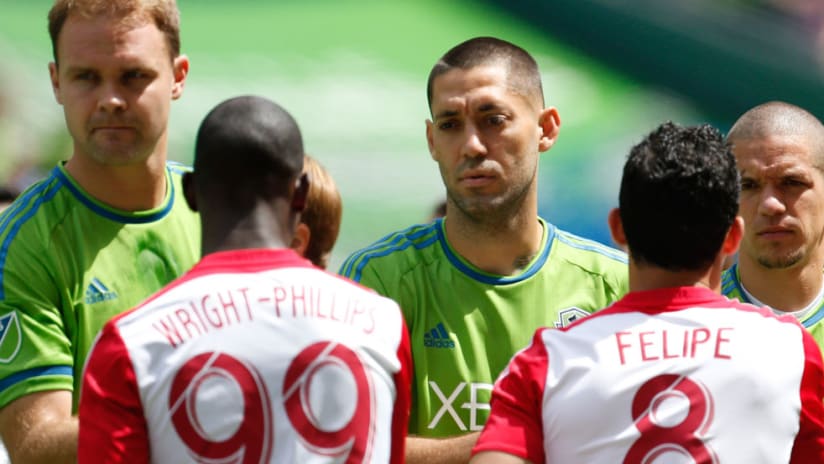Since the start of 2013, the New York Red Bulls (66) and Seattle Sounders (64) are first and second in regular-season wins in MLS. In the last eight months, they've also offered two of the starkest examples of pragmatic ruthlessness that seem straight out of Westeros: the unceremonious departures of club icons Sigi Schmid and Dax McCarty.
Both moves were made in spite of significant emotional attachment, and both moves were made with improvement firmly in mind. In a league that seems to upgrade every transfer window, no team can afford complacency. Fortunately – for supporters, players and clubs, alike – not every attempt to improve involves shedding a legendary figure.
The Sounders and Red Bulls big changes may overshadow the small ones, but the page turns in MLS. In an attempt to take the next step in 2017, both teams have made systemic changes to what's made them so successful for the past four years. Those tweaks will be on display on national television this Sunday at CenturyLink Field (7 pm ET; FS1 in the US, MLS LIVE in Canada).
Seattle
The defending champion Sounders are faced with a unique dilemma. They must integrate Clint Dempsey, one of the greatest American players of all-time, into a team that finished 2016 with only four losses in the 18 matches they played after he was diagnosed with an irregular heartbeat.
In the first two games of 2017, Seattle have deployed Dempsey and Jordan Morris through the middle and Nicolas Lodeiro playing a wide midfield role. The system is best described as a 4-4-2 or a 4-2-3-1, but those numbers can’t describe Lodeiro’s license to roam, the overlapping of left back Joevin Jones, or the angles created by Dempsey’s craft. Indeed, so far Seattle has shown flashes of excellence in their attack which are reminiscent of the best days of Deuce and Oba:
pic.twitter.com/F0lyUZ02Zp — MLSclips (@MLSgamefilm) March 15, 2017
We know that Lodeiro, Morris and Dempsey are some of the best attackers in the league, and combination play like that will give future opponents sleepless nights. For our purposes, it is equally revealing to look at how Seattle defends. Thus far, they have played Morris and Dempsey in a line together, with two banks of four players behind them.

This requires slightly more focus and discipline from Lodeiro (left midfield in the picture) than if he were playing in a central No. 10 role, and requires that Dempsey and Morris work together to be the first line of defense. We will return to this shortly.
New York
The Red Bulls won the Supporter’s Shield in 2015 with a high-pressure 4-2-3-1 formation that took MLS by storm. After flirting with playing two strikers at the start of 2016, Jesse Marsch switched back to what New York knew best and eventually set off on a club-record unbeaten run that they've carried through the first two games of this year.
Marsch went back to the two-striker system to start 2017. This year, it seems modeled on the 4-2-2-2 that had fellow Red Bull family member RB Leipzig, who Marsch spent time with this winter, setting the Bundesliga alit in the first half of their 2016/17 campaign. At its best, the 4-2-2-2 creates layers of players within close proximity that should lead to playmakers finding space as well as angles to play penetrating passes:
pic.twitter.com/4LAu7fcKwz — MLSclips (@MLSgamefilm) March 15, 2017
That sounds good in theory, but Red Bulls have switched back their 4-2-3-1 in both of their wins this year in search of goals. We'll save that deep dive for a future article. What we do know is that within the seven minutes of Sacha Kljestan creating the above chance for Bradley Wright-Phillips, New York misplayed 11 passes out of their own half against Colorado:

That prompted a sideline meeting between Marsch and Kljestan, the final few seconds of which can be seen on the TV broadcast just after the 30-minute mark. I was at Red Bull Arena, and I can assure you it was more than a handshake and hello.
Shortly thereafter, Red Bulls went back to playing a more familiar tune (and formation):
pic.twitter.com/RDt56Lx8Hq — MLSclips (@MLSgamefilm) March 15, 2017
Formational flexibility is a useful weapon, especially when teams become familiar with your primary system. While Red Bulls might not have mastered everything that comes with the 4-2-2-2 just yet, the fact that they have another club in their bag shows that New York and Marsch refuse to go stale. It's another wrinkle that makes it that much more complicated for opponents to prepare for them.
What to Watch For
Back to Seattle’s defending. Down the stretch, last year’s Sounders team didn't have to account for two freelancing attackers (Dempsey and Lodeiro) in their defensive shape. That's not the case this year, and it's taken some getting used to for Brian Schmetzer's men. Let’s take a look at Montreal’s opener from last weekend:
pic.twitter.com/ikChv9244w — MLSclips (@MLSgamefilm) March 15, 2017
Notice how both Cristian Roldan and Chad Marshall get pulled forward, and how this opens up space for Nacho Piatti to pick out Matteo Mancosu for Montreal’s opener. Does the space and pass remind you of the clip of Kljestan in a 4-2-2-2 from above? Seattle will have to keep the back two lines compact, and Dempsey and Morris will have to force New York into awkward areas of the field if they are to avoid a repeat of this scenario.
Meanwhile, the Sounders have an abundance of players who are comfortable on the ball, and their willingness to play right through pressure should give New York pause:
pic.twitter.com/TMVmlxnWpl — MLSclips (@MLSgamefilm) March 15, 2017
This type of passing out of the back could undo the Red Bulls counter-pressing, whether out of a 4-2-2-2 or a 4-2-3-1. Dempsey and Lodeiro are both dynamic playmakers, and we have seen Morris inflict damage on high lines in the past.
We are only two weeks into the 2017 campaign, and both teams are experimenting with how they will play this year. That experimentation (and the collection of elite MLS talent on both rosters) makes this a particularly intriguing early season contest.
Matt Pavlich is a youth soccer coach in the New York City area who holds a NSCAA Advanced National badge. He is the Assistant Coaching Director, Recruitment Coordinator and Girls 2002 head Coach at Asphalt Green Soccer Club, and boys assistant coach at Martin Luther King high school. He has worked for Opta since 2011, primarily focused on MLS. He also played varsity soccer at Vassar College, where he could fairly be described as mediocre.









